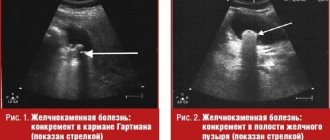According to the state report, the distribution of industrial enterprises among sanitary and epidemiological safety groups in 2018 compared to 2015 changed. There is a slight increase in the share of enterprises of group I (satisfactory) with a simultaneous reduction of enterprises of group III (extremely unsatisfactory) and group II with its industrial enterprises of unsatisfactory sanitary and epidemiological well-being [1, 2].
The share of industrial enterprises of the 1st group of sanitary and epidemiological well-being consistently increased from 25.03% in 2012 to 27.48% in 2022, while the share of industrial enterprises of the 3rd group of sanitary and epidemiological well-being decreased accordingly from 10.23% in 2012 to 7.13% in 2022
The share of enterprises of groups II and III of sanitary and epidemiological safety, the workplaces of which for the most part do not meet the requirements of sanitary and epidemiological rules and regulations, continues to remain significant - 72.53%.
At the same time, the share of newly diagnosed occupational diseases during periodic medical examinations is steadily decreasing - from 69.7% in 2013 to 58.13% in 2022, while with active treatment there is an increase in the proportion of newly diagnosed diseases - from 30.3% in 2013 to 41.87% in 2022
The frequency of occupational injuries from exposure to physical factors and functional overstrain remains quite high. A significant place among these lesions is occupied by diseases of the musculoskeletal system of occupational origin, the development of which may be associated with the effects of physical overload, general vibration, and functional overstrain [3].
The leading place in this nosology is occupied by vertebrogenic syndromes caused by degenerative-dystrophic changes in the cervical and lumbosacral localization, in particular spondyloarthrosis, such as muscular-tonic, compression-radicular. Vertebrogenic pathology is also included in the structure of vibration disease from exposure to general vibration (radiculopathy of the lumbosacral level) [4, 5].
According to the modern list of occupational diseases, the syndrome of vertebrogenic diseases from physical overload and functional overstrain is as follows [6]:
4.4.1. Muscular-tonic (myofascial) syndrome of the cervical level M53.1.
4.4.2. Radiculopathy (compression-ischemic syndrome) of the cervical level M 54.1.
4.4.3. Myeloradiculopathy of the cervical level M 53.8.
4.4.4. Muscular-tonic (myofascial) syndrome of the lumbosacral level M 54.5.
4.4.5. Radiculopathy (compression-ischemic syndrome) of the lumbosacral level M 54.3.
4.4.6. Myeloradiculopathy of the lumbosacral level M 53.8.
Vertebrogenic syndrome in the structure of vibration disease:
2.6.2. Vibration disease (T75.2) associated with exposure to general vibration:
- manifestations: peripheral angiodystonic syndrome (including Raynaud's syndrome), polyneuropathy of the upper and lower extremities, including with sensory and autonomic-trophic disorders, polyneuropathy of the extremities in combination with radiculopathy of the lumbosacral level, cerebral angiodystonic syndrome.
Taking into account the age of patients with vibration disease and occupational diseases of the musculoskeletal system, obligate morphological changes in the spine are arthrosis of the facet joints (spondyloarthrosis, facet syndrome), mainly in the cervical and lumbosacral regions. Therefore, an obligatory component of pathogenetic treatment is the use of chondroprotectors along with the prescription of non-steroidal anti-inflammatory drugs and muscle relaxants.
The purpose of the study is to study the effectiveness of the drug Alflutop in the treatment of patients with occupational vertebrogenic pathology in the structure of vibration disease and from physical overload and functional overstrain (as a chondroprotector) in accordance with the instructions for use (registration certificate No. 012210/01 dated 05.10.17) with analysis severity of pain syndrome, motor activity of patients.
One of the most famous, widespread, used in practical medicine for many years and has repeatedly proven its effectiveness in the treatment of joint diseases is the drug Alflutop. The drug is an injection solution. The active component is a bioactive concentrate from small sea fish. The concentrate contains mucopolysaccharides (chondroitin-4 and 6-sulfate), amino acids, peptides, sodium, potassium, calcium, magnesium, iron, copper and zinc ions, glucuronic acid. The results of clinical studies prove the main effects of Alflutop: chondroprotective; anti-inflammatory; improved joint function and mobility; increase in the thickness of the cartilage of the articular surface; reducing the dose of non-steroidal anti-inflammatory drugs (NSAIDs) taken; restoration of the level of prostaglandins in the gastric mucosa, reduced while taking NSAIDs. The effectiveness and safety of Alflutop in the treatment of patients with vertebrogenic pathology has been demonstrated in a number of clinical studies by domestic and foreign authors [7, 8].
Material and methods
The case histories of 87 patients with spondyloarthrosis in the structure of occupational pathology of the musculoskeletal system from physical overload and functional overstrain were retrospectively assessed. All patients underwent clinical and physiological examination. Duration of observation: 5 years (2013–2017).
Inclusion criteria: age 18 years and older, presence of facet syndrome at the lumbosacral and/or cervical level, confirmed by neuroimaging, and signed informed consent.
Exclusion criteria: contraindications in accordance with the instructions for use of the drug Alflutop, taking chondroprotectors for 1 month before inclusion in the study. During hospital observation, patients did not take NSAIDs or analgesics. Additionally, B vitamins, muscle relaxants (tizanidine or tolperisone), metabolites were prescribed, physiotherapy was carried out according to indications (sinusoidal modulated current therapy, diadynamic therapy, electrophoresis of drugs, for example halidor), massage.
All observation cases were divided into two groups: group 1 consisted of 31 patients (20 women, 11 men), group 2 - 56 patients (25 women, 31 men). In group 1, Alflutop was injected 10 times paravertebrally into four points at the lumbosacral level (2 ml) or into two points at the lumbosacral level (1 ml) and two points at the cervical level (1 ml). In group 2, Alflutop was administered 10 times intramuscularly, 1-2 ml deep.
Demographic information is shown in the table.
Group Demographics
Of the peculiarities in the groups, it is worth noting that among the patients of group 1, 3 women and 5 men suffered from vibration disease, the remaining 23 patients suffered from muscular-tonic and radicular compression syndromes of the cervical and/or lumbosacral level. In all patients, neuroimaging reveals spinal spondyloarthrosis.
In group 2, 8 patients were diagnosed with vibration disease with radiculopathy of the lumbosacral level, the remaining 48 patients had diagnosed muscular-tonic and radicular compression syndromes of the cervical and/or lumbosacral level. Neuroimaging revealed spinal spondyloarthrosis in all patients.
All patients underwent a standard neurological examination. The main tool for pain assessment was the visual analogue scale (VAS). The number of exacerbations of back pain over 1 year was also assessed.
For statistical analysis, the R software package was used (The R Project for Statistical Computing, https://www.r-project.org). All statistical tests were two-sided, with a significance level of 5%; all confidence intervals (CIs) were two-sided 95%; Continuous data are represented by the number of observations, mean with standard deviation (SD), median (Me) and range; discrete quantities are described by absolute and relative frequencies.
Research on the effectiveness of the drug
A positive and important point is that Alflutop cannot affect the action of other drugs. But it is precisely this fact that makes experts doubt its effectiveness. These doubts are not accidental: if the drug had a strong effect on the patient’s body, then in this case it would be possible to observe the interaction of Alflutop with other drugs. But at the same time, there are many positive reviews from satisfied patients, which certainly speaks to the benefits and effectiveness of the medicine.
Various studies by Russian specialists are aimed at establishing the effectiveness and, most importantly, the safety of this drug. Today, the safety of Alflutop is an almost undeniable statement. Despite this, the effectiveness of the drug is still in question.
Many studies have been conducted regarding the effectiveness of Alflutop.
The drug "Alflutop" in some cases can be a good replacement for NSAIDs. Alflutop can act as an analgesic, so it can be very useful when the dose of an anti-inflammatory drug needs to be reduced. Unlike NSAIDs, this drug has no side effects and does not disrupt the digestive process, since the method of administration allows it to bypass the gastrointestinal tract. Scientists came to these conclusions after studying the results of treatment of a large number of patients with osteoarthritis.
Results and discussion
When analyzing the clinical picture of the disease, syndromes of cervicalgia, lumbodynia, and radiculopathy at the lumbosacral level were identified in most patients.
When assessing pain, a significant decrease in the severity of pain was noted over 5 years in all study groups, but especially in the 1st group. Thus, in group 1 pain was assessed:
— by 8 points in 2013, 11 people, in 2014, 1 patient, in the next 3 years, not a single patient had 8 points on the VAS scale;
— by 7 points in 2013 13 patients, in 2014 6, in 2015 3, in 2016 2; in 2022, this level of pain was not noted in any patient;
— pain was rated 6 points in 2013 by 7 patients, in 2014 by 18, in 2015 by 13, in 2016 by 12, in 2022 by 3.
It is worth noting that in 2022, 20 patients already rated pain on the VAS as less than 5 points (Fig. 1)
.
Rice.
1. Dynamics of pain severity according to VAS in group 1. Thus, during the observation period, there was a redistribution of patients from groups with severe pain syndrome (6-8 points) in favor of groups with less severe pain syndrome (less than 5 points).
In group 2 (intramuscular administration of Alflutop) there was also a decrease in the severity of pain during observation:
— 6 patients assessed pain as 8 points in 2013, 2 in 2014; in subsequent years, no one had 8 points on the VAS scale;
— pain syndrome was reported as 7 points in 2013 by 36 patients, in 2014 7 points were recorded in 34 people; in 2015 - 30, in 2016 - 18; in 2022, a pain level of 7 points was not noted in any patient;
— pain was rated 6 points in 2013 by 14 people, in 2014 by 20, in 2015 by 20, in 2016 by 26, in 2022 by 26;
— pain was rated below 5 points in 2015 by 6 patients.
It is noted that in 2022, already 13 people rated their pain as less than 5 points (Fig. 2)
.
Rice.
2. Dynamics of pain severity according to VAS in group 2. Thus, in group 2 there was also a redistribution of patients from groups with severe pain syndrome (6-8 points) in favor of groups with less severe pain syndrome (less than 5 points).
It is also worth noting that in the group of patients in whom Alflutop was administered paravertebrally (group 1), the average pain score in 2013 was 7.1 points, in 2014 - 6.1 points, in 2015 - 5. 9 points, in 2016 - 5.3 points, in 2022 - 5.1 points, i.e. there was a decrease in the average severity of pain within 3 points.
In the group of patients who received Alflutop intramuscularly, the average pain score in 2013 was 6.9 points, in 2014 - 6.7 points, in 2015 - 6.4 points, in 2016 - 6.1 points , in 2022 - 5.2 points, i.e. there was a decrease in the average severity of pain within 1 point (Fig. 3)
.
Rice.
3. Dynamics of the average pain value according to VAS by group. When assessing the number of exacerbations of back pain in patients of both groups, a tendency to decrease was revealed throughout all years of observation.
Thus, in group 1, the largest number of exacerbations (6) per year in 1 patient was registered in 2013 in 3 patients. In subsequent years, such a frequency of exacerbations was not recorded in anyone. In the same year, 4 exacerbations were registered in 17 patients, 3 in 11. In 2014, the largest number of exacerbations (5) were in 4 patients, 4 in 15, 3 in 10, 1 in 2. In 2015 d. 5 exacerbations were registered in 1 patient, 4 in 10, 3 in 14, 2 in 5; 1 patient had no exacerbations within a year. In 2016, the largest number of exacerbations (4) was recorded in 2 people, 3 in 19, 2 in 10. In 2017, the largest number of exacerbations (3) was recorded in 7 patients, 2 in 16, 1 at 8 ( Fig. 4)
.
Rice.
4. Dynamics of the frequency of exacerbations per year in group 1. Thus, the average number of exacerbations per year in the group of patients in whom Alflutop was administered paravertebrally was 3.8 cases in 2013, 3.6 in 2014, 3.1 in 2015, 2.7 in 2016 , in 2017 1.9; i.e., it has decreased by almost 2 times over 5 years.
In the 2nd group of patients, the largest number of exacerbations per year (6 exacerbations) was registered in 2013 in 26 patients. In the same year, 11 patients had 5 exacerbations, 8 had 4, 11 had 3. In 2014, 12 patients had 6 exacerbations, 23 had 5, 15 had 4, 3 had 3, 2 had 3. In 2015, 6 exacerbations were registered in 10 patients, 5 in 24, 4 in 11, 3 in 8, 2 in 3. In 2016, 6 exacerbations were in 7 people, 5 in 18, 4 — in 21, 3 — in 7, 2 — in 3. In 2022, 6 exacerbations were in 4 patients, 5 — in 9, 4 — in 27, 3 — in 12, 2 — in 4 ( Fig. 5
).
Rice.
5. Dynamics of the frequency of exacerbations per year in group 2. Thus, the average number of exacerbations per year in the group of patients who received Alflutop intramuscularly was 4.9 cases in 2013, 4.7 in 2014, 4.5 in 2015, 4.3 in 2016 , in 2017 3.9; i.e., it decreased by 20% over 5 years (Fig. 6)
.
Rice. 6. Dynamics of the average number of exacerbations per year.
Side effect
Alflutop is a drug that extremely rarely causes any side effects. However, after administration of the medicine, it is still possible to notice redness of the skin. Also, side effects may include itching and a burning sensation at the injection site.
When the product is injected into a joint, increased pain may occur. This happens due to intense blood circulation, as well as activation of the metabolic process when the drug is introduced into the joint. If any side effect occurs, you must immediately inform your specialist.
Analogs
Often, the drug "Alflutop", just like its analogues, can have an almost equivalent effect, which is why there is almost no difference - only the name of the drugs differs. However, their principle of action still has some differences, which is why it is dangerous to independently replace one remedy prescribed by a doctor with another, for example, a cheaper one.
Among the drugs, there are several analogues of “Rumalon” - a medicine that also consists of natural ingredients, “Chondrolone”, “Structum”, etc.
"Rumalon"
The prescription of a particular drug directly depends on the severity of the pathological process and the characteristics of its course.






